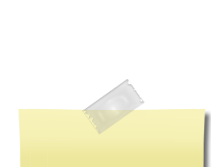"SPILT INK" & Genealogy - DNA Forum
| Forum: Spilt Ink | |||||
|
|||||
|
Ron Smith
 Posts: 58 View Profile |
#16 Southern Souvenirs: Molasses and Memories Posted Sunday, February 18, 2018 05:04 PM Southern Souvenirs: Molasses and Memories A lot of Southern tradition has to do with cooking, that is why we find “Southern” affixed to the name of the recipe. It would be hard to find a region that reveres its traditions more deeply than the deep South. Wartime rationing of sugar hit the Southland pretty hard. This is a culture where “sweet tea” is accepted as one of the revered traditions. I’m not sure if tea qualifies as “cooking”, but sweet tea is definitely Southern! There is so much appealing about a big glass of iced tea, it is almost a social event in itself. Take the tall tinkling tumblers to the veranda, and you almost feel as if engraved invitations should have been sent out. Ice was still a near luxury, since the ice box needed it for its primary function: chilling perishables. Use too much ice in the tea tumblers and the milk might sour. Since there were four more of us now, we would have been facing an ice-crisis every day except Dad was commuting to town every weekday, and would bring ice almost daily, and on Fridays he would bring an extra chunk for the ice cream freezer! Without sugar, tea drinkers at our table had three options; drink it unsweetened, use saccharin, or use Ribbon Cane molasses . My mother chose the first option, and by “chose”, I mean her choice extended to me and my brother as well. Mr. K used saccharin, and he would dissolve the tablets in a teaspoon with a few drops of tea by using the handle of his table-knife as a pestle. I would emulate, or attempt to, any of Mr. K’s behavior, because in my eyes, he did no wrong! Mother did her best to discourage this; she may have been thinking I would take up Red Dot cigars. My tablet-smashing attempt wound up mostly splashed on the table, a double dilemma. To try to clean it up would further disrupt table decorum, and to leave it would be worse. I decided I could live with unsweetened tea, and for seventy-some years, I have. Molasses as sweetener did have its bright side. For one thing, we were not likely to run out of it. Mr. K grew the Ribbon Cane in a sandy creek bottom where the light soil was perfectly appropriate for the crop. The longer the growing season the better the sugar content, so he planted as early in the spring as possible and harvested just before the risk of frost in the fall. The stalks were then pressed through his own mill, and the juice cooked in his own “pan’ in his facility, in the old traditional way. I have never found any better than that which was under his label. One of the consequences of having such a bountiful supply was finding many uses for it in the kitchen and at the table. Daddy was the barbecue cook in our family and preferred his own sauce recipe. Molasses was a key ingredient. Ribs required baked beans, and more molasses. Mrs. K baked lots of molasses cookies and gingerbread for the sweet-tooth crowd which included all of us. We had it on our oatmeal and on our buttered biscuits. By adjusting the liquids in her recipes, she could eliminate a little or a lot of the sugar requirement from her cooking. I think it would be very difficult to starve a farmer! Mr. K had a little white mule that provided the propulsion for his mill. There was a long pole that was attached to the top of the gear mechanism that turned the rollers that squeezed the stalks of cane. The mule was harnessed to the other end of the pole. My role in the production operation served a two-fold purpose. I sat astride the mule and with a slender switch, I could tap the mule as required, to keep him moving. He seemed content with his circular journey where the scenery was always the same, and I didn’t have to bother him that much. I used the switch mostly to keep the flies from aggravating him so he would stay calm. The other purpose was to keep me from getting under foot, and always in sight so my whereabouts was always known, and I felt I was contributing mightily to the task at hand. Syrup-making was fun, but there was one daily chore that was better, and that was seeing to it that the piggies had their dinner. Among the melon crop, there would be culls, melons that did not get their proper size, proper shape, or were scarred or blemished in some way. When the trucks arrived to take the harvested melons to market, they would be lined with straw to cushion the load, and as the melons were loaded, straw would fill the voids and serve as dunnage to prevent bruising of the melons. Any melons that were culled would be stored in a cool, straw-piled room in the barn. To feed the hogs, Mr. K would stop by the kitchen to pick up two pails that held the kitchen scraps, table scraps, potato peelings, carrot tops, and various nourishing things that a pig would find delectable. He would take them to the barn where he would mix in bran-meal and add some water. He would select a culled melon to put under each arm, pick up the pails, and head toward the road under the hill. I would pick out the biggest melon I thought I could carry all the way to the hog enclosure, and follow him. When we reached the road, we would cross it and the pigs would be there at the fence to meet us. He would empty the pails into their troughs. From a grassy bank overlooking the hog enclosure, we would break the melons and enjoy eating the “heart” out of them and toss the other pieces over the fence for pig dessert. The best part of the day was this 1945 version of seedless watermelon! Another item of which there was no shortage was peanuts. Mr. K really liked his roasted peanuts. He grew a large field of them and he was his own best customer. Where ever he went, with the occasional exception of church, he was likely to have at least one of his pockets full of them. One of the ladies would spread a cookie sheet with them, sprinkle them lightly with water, and put it in the oven, and in a little while the kitchen would have the fragrance of the midway at the fair! Fresh roasted peanuts were not the only snacks available. With so many varieties of peaches and other fruit trees available, it seems that something was always ripe enough to pick. As well as cultivated domesticated varieties, the woods were full of items there for the picking. Though not prized as a fruit, but will do in a pinch, is the persimmon. After frost, the flavor is pleasant, the skin soft, but the seeds are numerous. Muscadine grapes are sometimes plentiful as are mayhaws and blackberries and wild plums. The only tree I could climb easily to put the fruit within reach was the fig, growing just outside the front yard. I didn’t consider it worth the effort because I did not rate the fig very highly as a fruit, or even edible, until and unless it was cooked into a cookie. But why spoil a cookie? Admittedly, it was very sweet, but lacked flavor, and spare me the slimy texture and those gritty little seeds! It is no wonder people “hang them out to dry“. My first one was my last one, though the tree was an excellent one for climbing. There were two other ready sources of snack foods that need to be mentioned, and both could be found inside a small, very old building where the lane terminated near the foreyard. The original use of the building is obscure but I heard others refer to it as the well house, though I never saw a pump there. It had a shady location and remained cool on warm days, so the door was kept closed. More often it was referred to as the potato house. I called it the “sweet potato house” because that is where they could be found. More commonly, sweet potatoes are served baked, candied, or prepared as a Southern delicacy, sweet potato pie. I had been introduced to one other treat, scraped sweet potato. I was too young to carry a pocket knife; ask Mom, ask Mrs. K, ask anybody! But I had one anyway. It was cheap, dull, and small, but beautiful, with tangerine colored handles, and it went every where with me. I think someone had won it on a coffee-shop “punch-board” and deemed it not worth keeping. It’s amazing, the treasures grown folks throw away! The other treasure kept in the well house was a bundle of selected stalks of Ribbon Cane, stripped of the leaves and leaned into a corner, as if awaiting a trip to the State Fair. These would be off-limits to me without adult assistance, for the cane has a hard, tough “rind” that must be peeled, but is difficult to cut, and a person can cause themselves harm if the knife slips. Once the inner core, a fibrous pulp containing the juice, is free of the woody peel, it is like a stick of sweet candy, but is as juicy as a popsicle! Now, if the seeds of a fig are disgusting, the fibrous pulp of a stick of sugar cane is worse, because you can swallow the seeds. The pulp is not edible, so chewing cane is an activity best conducted in the great outdoors, aggravating, but worth it!
|
||||
|
|||||
|
A. J. Smith
 Posts: 29 View Profile |
RE: #16 Southern Souvenirs: Molasses and Memories Posted Wednesday, March 21, 2018 11:32 AM What a great story, Ron! Please keep it up! Persimmons grew wild where we lived in Arkansas. We used to sharpen (I carried a knife at a young age and still do.) sticks, pierce persimmons with it, and hurl them at high speeds. My sister cautioned me not to eat them before they ripened because they "Puckered Up" one's mouth. At supper that evening I asked why that was, but mispronunced "Puckered." My parents were not pleased. |
||||
|
|||||
|
Ron Smith
 Posts: 58 View Profile |
RE: #16 Southern Souvenirs: Molasses and Memories Posted Wednesday, March 21, 2018 02:56 PM Persimmons make good ammo, especially before frost. Afterward, and they become edible. they will put an indelible stain on a Sunday-white shirt. There's nothing like chomping on a bar of Life-Buoy soap to restore "pucker-power" after a slip of the tongue. My slip-up came while "helping" a co-worker-family with their move, and there occurred a spillage of poker-chips. A 6-year-old needs to be very careful when trying out new vocabulary! |
||||
|
|||||

